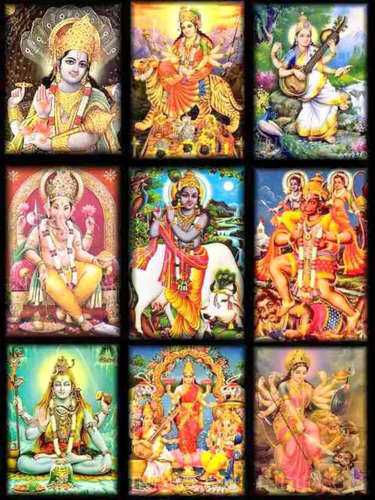
Hinduism is a wealth of deep symbolism, complex philosophies, and enduring wisdom. However, beneath the colorful depictions of deities exists a concealed layer of significance that many neglect. Every god is more than a celestial being; they serve as metaphors, representing universal principles, human qualities, and the fragile equilibrium of existence itself.
1. Lord Ganesha: The Remover of Obstacles and Master of Wisdom
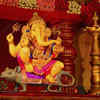
(Image Source : Adobe Stock)
We all identify Ganesha, the elephant-headed deity, as the dissipator of obstacles. However, his appearance teaches us more profound lessons:
The Elephant Head: Represents wisdom, memory, and a keen intellect. Elephants are recognized for their capacity to move through thick forests, just as Ganesha aids us in overcoming life’s difficulties.
The Small Eyes and Big Ears: Urge us to listen attentively and observe the larger scenario.
The Broken Tusk: Signifies sacrifice and the concept of relinquishing perfection to attain greatness. It's said that Ganesha shattered his tusk to compose the Mahabharata, instructing us to value purpose over pride.
The Mouse as His Vehicle: The mouse embodies desires. Ganesha’s dominance over the mouse represents the mastery over primal urges and desires, ensuring they benefit us rather than control us.
2. Goddess Lakshmi: The True Wealth of Life
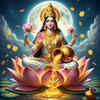
(Image Source : ShutterStock)
Often regarded as the deity of wealth and abundance, Lakshmi’s symbolism goes much deeper than just material wealth:
The Lotus Flower: She is frequently illustrated seated on a blossoming lotus, representing purity and detachment. Just as the lotus stays untainted by murky water, genuine prosperity arises when we transcend negativity.
The Gold Coins: Although they symbolize material wealth, the flowing coins also represent generosity and the necessity of circulating wealth for the benefit of society.
The Four Hands: These symbolize the four objectives of life in Hindu philosophy: Dharma (righteousness), Artha (wealth), Kama (desires), and Moksha (liberation).
3. Lord Shiva: The Cosmic Transformer

( Image Source : TOI)
Shiva, frequently depicted in profound meditation or executing the Tandava dance, embodies the quintessential symbol of change and annihilation:
The Third Eye: Signifies increased consciousness and the capacity to perceive beyond deceits.
The Trident (Trishul): Represents the equilibrium of three essential elements of existence—creation, preservation, and destruction.
The Crescent Moon: Denotes time and its mastery. Shiva, as the eternal being, transcends the confines of time.
The Snake Around His Neck: Symbolizes repressed ego and the strength of kundalini energy, a latent spiritual power present in every person.
4. Goddess Kali: The Fierce Protector
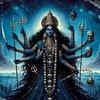
( Image Source : Shutterstock)
Kali’s frightening look frequently draws attention, yet her symbolism is both empowering and transformative:
The Dark Skin: Symbolizes the womb of the universe, the origin of all creation.
The Garland of Skulls: These are not symbols of violence but representations of the ego, pride, and ignorance she assists in eliminating.
The Outstretched Tongue: Serves as a reminder of humility and the necessity to embrace our imperfections.
Standing on Shiva: Illustrates the victory of cosmic energy over static potential. It conveys the message that action and energy fuel change and advancement.
5. Lord Vishnu: The Preserver of the Universe
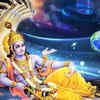
( Image Source : TOI)
Vishnu, often depicted resting on the serpent Shesha, embodies preservation and balance:
The Serpent: Signifies eternity and the cyclical aspect of time.
The Conch (Shankha): Represents the sound of creation (Om), serving as a reminder of the divine source of the universe.
The Discus (Chakra): Symbolizes the clarity of the mind and the perpetual cycle of life.
The Blue Skin: Illustrates expansiveness and profundity, similar to the sky and sea. Vishnu’s blue color serves as a reminder of his boundless essence.
6. Saraswati: The Goddess of Knowledge and Creativity

( Image Source : Pinterest)
Saraswati, the personification of wisdom, art, and music, instructs us to pursue advanced learning:
The Veena: Represents harmony and the interrelation of knowledge, music, and art.
The White Attire: Signifies purity of thought and transparency.
The Swan: Renowned for its capacity to separate milk from water, it represents discernment—the skill to differentiate between right and wrong.
The River: Symbolizes the continuous flow of wisdom, which must perpetually move to remain significant and effective.
7. Hanuman: The Ultimate Devotee and Strength Incarnate
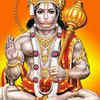
( Image Source : Peakpx)
Hanuman’s tales of devotion and strength are legendary, but his persona carries a deeper message:
The Monkey Face: Represents the human mind, which can be restless but is capable of incredible focus when disciplined.
The Mace (Gada): Symbolizes self-discipline and unwavering loyalty to dharma.
His Leap to the Sun: A reminder that ambition, when paired with devotion, can achieve the impossible.
The gods of Hinduism are not remote entities to simply be revered they serve as mentors, providing life teachings through their depictions and narratives. Their representations connect the tangible and the intangible, reminding us of our inherent capabilities and the equilibrium required in life.
By grasping the concealed significances behind these deities, we enable a richer understanding of Hinduism’s insights. Therefore, the subsequent occasion you observe a sculpture or artwork of a Hindu god, delve deeper than what is apparent. You may uncover a lesson that alters your viewpoint on life.
 Hinduism is a wealth of deep symbolism, complex philosophies, and enduring wisdom. However, beneath the colorful depictions of deities exists a concealed layer of significance that many neglect. Every god is more than a celestial being; they serve as metaphors, representing universal principles, human qualities, and the fragile equilibrium of existence itself.
Hinduism is a wealth of deep symbolism, complex philosophies, and enduring wisdom. However, beneath the colorful depictions of deities exists a concealed layer of significance that many neglect. Every god is more than a celestial being; they serve as metaphors, representing universal principles, human qualities, and the fragile equilibrium of existence itself.






